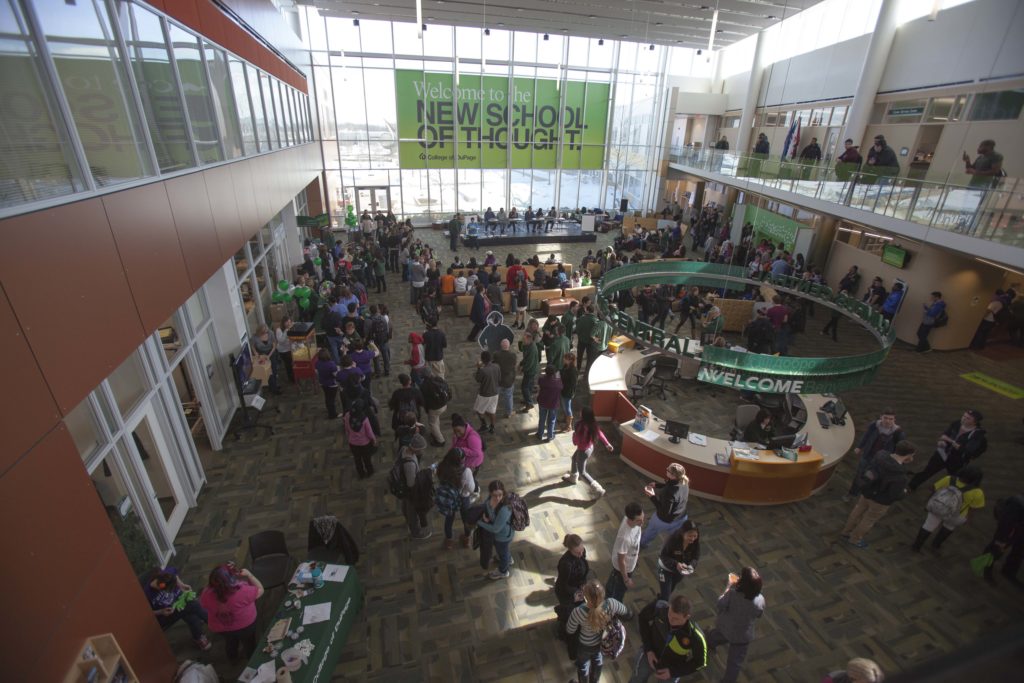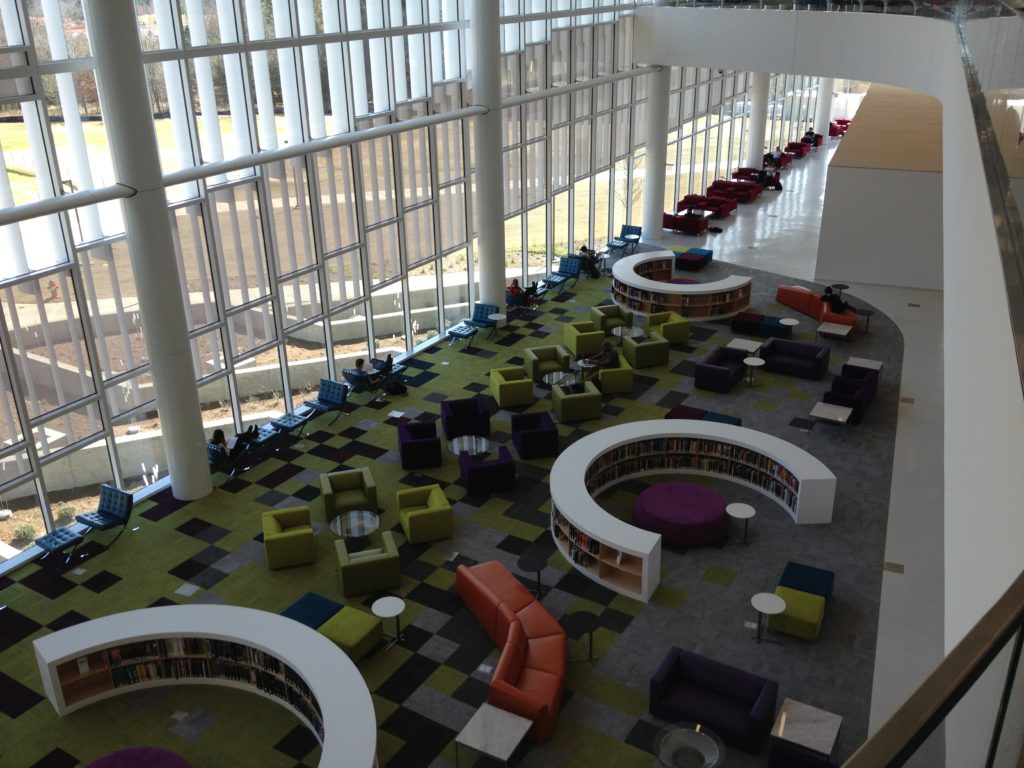As we get into the meat of this course, I have been fascinated by the idea of interconnectivity that is implied within the term “hyperlinked environments.” The idea of community is not new, of course; John Donne (1624) declared that “No Man is an Iland, intire of it selfe;” (Meditation 17, p. 415) in the 17th century, and certainly our current situation of hunkering down on our own has caused many of use to consider how important community is in our own lives, whether it’s to help us raise our children, discuss scholarly ideas, or simply to relax in the company of others without the use of a video call.
But the idea of community within the academic library – and across campus – hasn’t been one that I had seriously thought about before this course, even as I work as an intern at one. I have seen small examples of this, that librarians present to classes and work with faculty to develop research projects or teach information literacy, but I hadn’t fully considered the scope of possibilities until I started this week’s readings.

We were just talking about the importance of encouraging curiosity in first-year classes at our intern meeting last week, and how some professors use their role to shut down inquiry that they feel isn’t important, or would be too difficult to research. The article by Deitering & Rempel (2017) spoke directly to this, that librarians need to work with these professors to find ways to reshape the conversation between professors and students. Perhaps it’s not as simple as “yes, that’s a good topic,” or “no, that won’t work.” Perhaps professors should at least consider why the student wants to investigate something and help them to reframe their question into something that could be researched and lead to an interesting paper.
I do like that Deitering & Rempel (2017) worked directly with the teachers to develop a curriculum that was more founded in inquiry and curiosity and less in finding scholarly resources. One challenge with older structures of research, writing and librarianship is that the library was the place where trustworthy resources were gathered and lived. If you need a good resource, ask the librarian. But it’s not a process that translates to the outside world – if you’re gathering a report for a superior, you can’t necessarily go to your company’s library to find reliable resources. Students need to be able to evaluate resources to determine what is trustworthy, one of the key elements of information literacy.
Barbara Fister (2016) related this shifting attention of information literacy from merely locating trustworthy resources to our more complicated notion of scholarship as a conversation, including the evaluation of various resources, whether or not they are “scholarly.” As Fister explains, “There’s an emphasis on information as something that is socially negotiated, that is complex, that isn’t merely something you find and use but is created by people – including our students. We need to think about this as we design our collections and services,” (para. 5).

These ideas about community are affecting not only our collections and services, but the design of our library spaces as well. The video about the new library at North Carolina State University (2013) notes that they made the decision to place more emphasis on group study and collaborative areas, reducing the space used for book and resource storage. But if it’s important for our students to be collaborating, shouldn’t we as librarians be collaborating with faculty as well?
The challenge will be that such collaboration will force universities to rethink the older, patriarchal structures that have been used to organize people for a long time. Brian Mathews (2017) has some interesting suggestions for how libraries can rethink their organization chart, but for them to truly be interconnected, there needs to be communication not only across the library but throughout campus, which can be difficult, given how many people typically work on a campus, particularly at larger universities. I suspect the onus will be on campus leaders to recognize that, in order to encourage collaboration and inquiry from our students, the campus leaders, faculty and staff need to collaborate as well; it will be much harder to facilitate reorganization from the ground up.
References
COD Newsroom. (2014, February 25). Welcome to the New School of Thought – College of DuPage Brand Launch February 2014 96 [Image]. Flickr. https://www.flickr.com/photos/41431665@N07/12798294075
Deitering, A., & Rempel, H. G. (2017). Sparking curiosity. In the Library With the Lead Pipe. http://www.inthelibrarywiththeleadpipe.org/2017/sparking-curiosity/
Donne, J. (1624). Devotions vpon emergent occasions and seuerall steps in my sicknes digested into I. meditations vpon our humane condition, 2. expostulations, and debatements with god, 3. prayers, vpon the seuerall occasions, to him / by iohn donne .. London, Printed for Thomas Iones.
Fister, B. (2016). Reframing libraries. Library Babel Fish at Inside Higher Ed. https://www.insidehighered.com/blogs/library-babel-fish/reframing-libraries
Mathews, B. (2017). Cultivating complexity. Virginia Tech. https://vtechworks.lib.vt.edu/handle/10919/78886
North Carolina State University. [NCState]. (2013, July 30). The Hunt Library Story (updated) [Video]. YouTube. https://www.youtube.com/watch?v=Okr78MUrImI
Oliver, K. (2013, February 27). New Hunt Library, NC State University [Image]. Flickr. https://www.flickr.com/photos/89333651@N00/8514425460